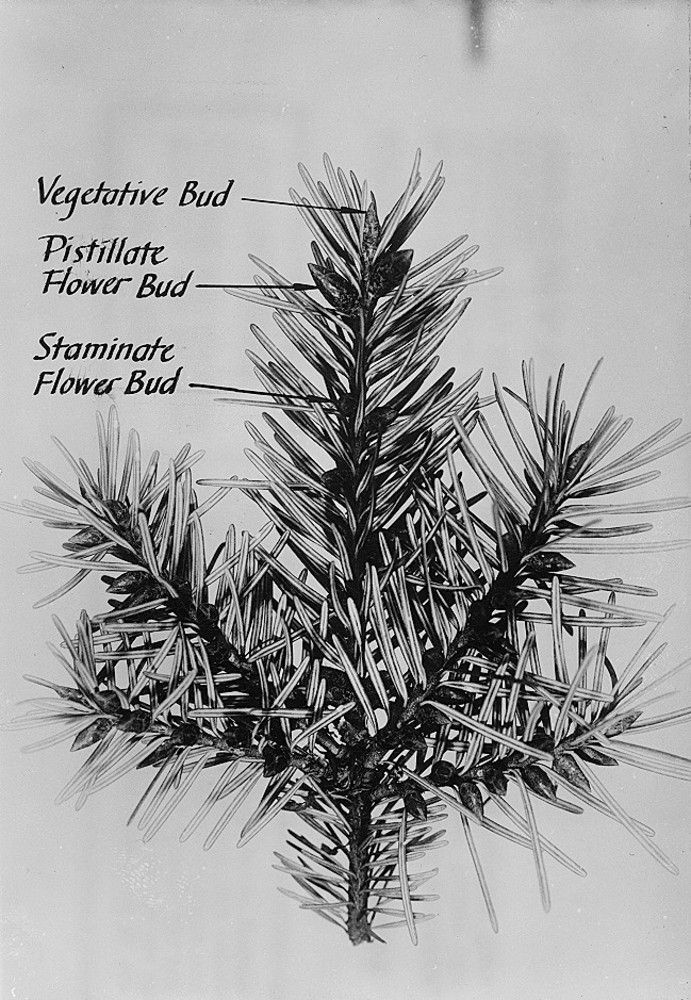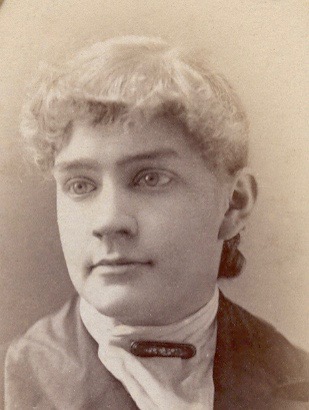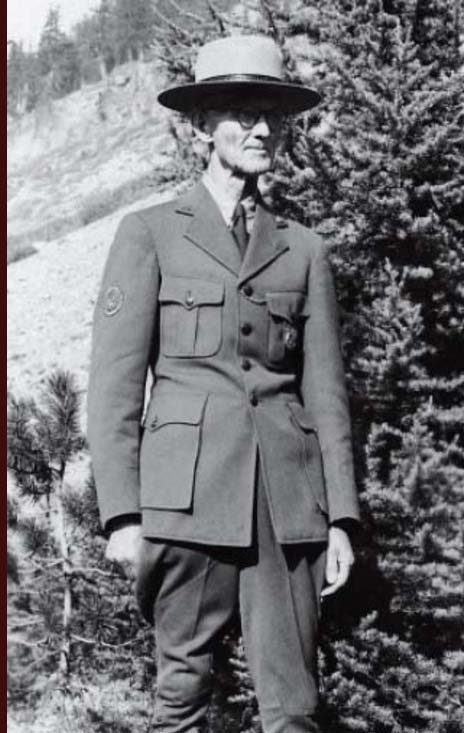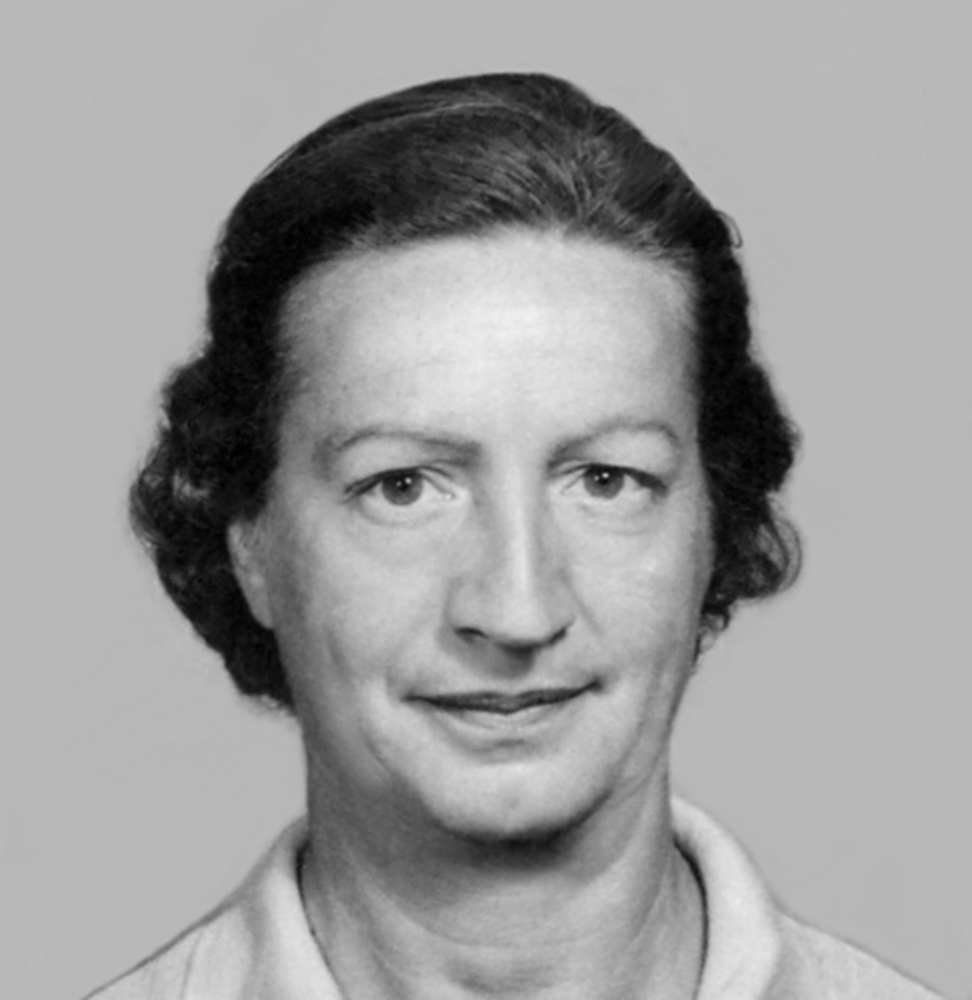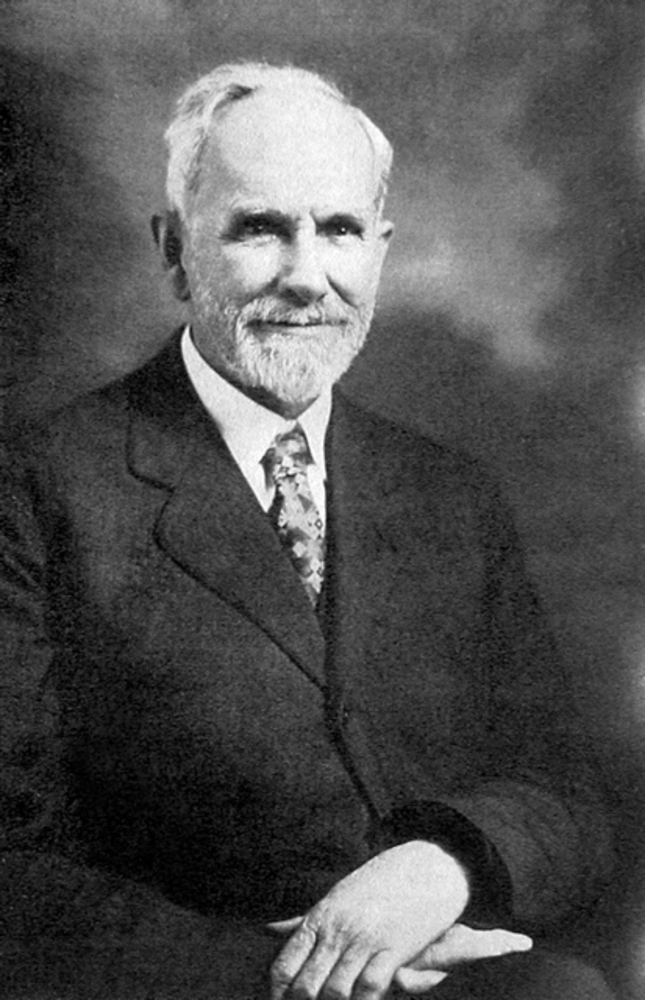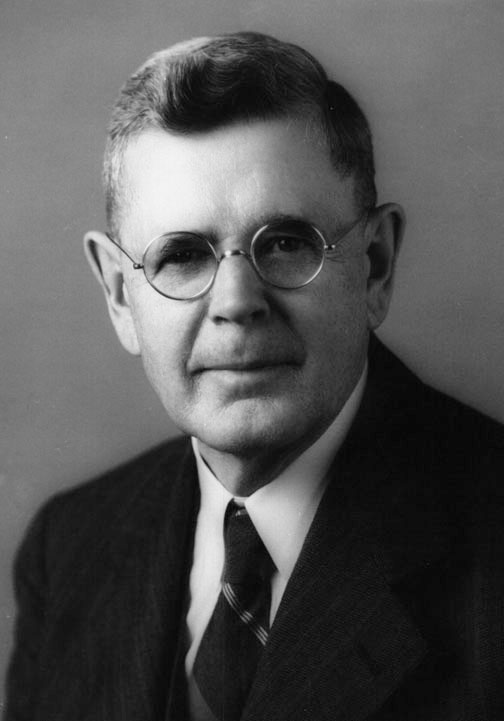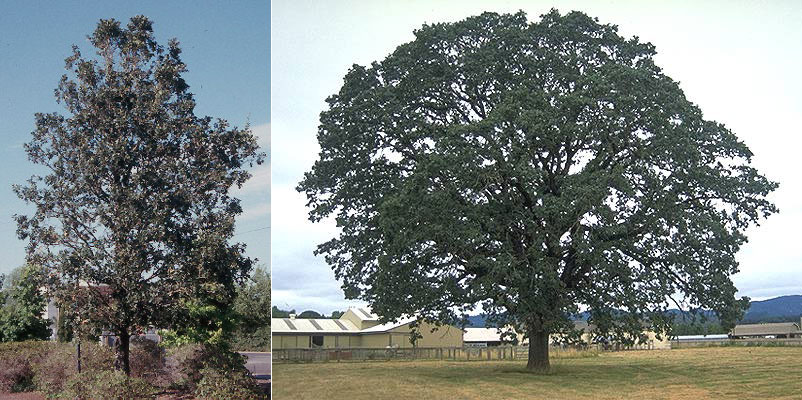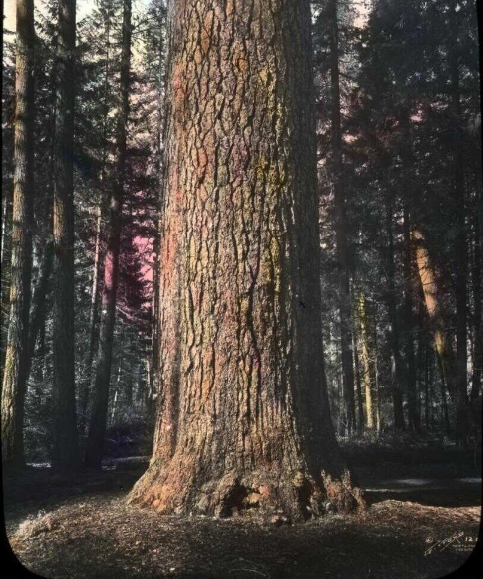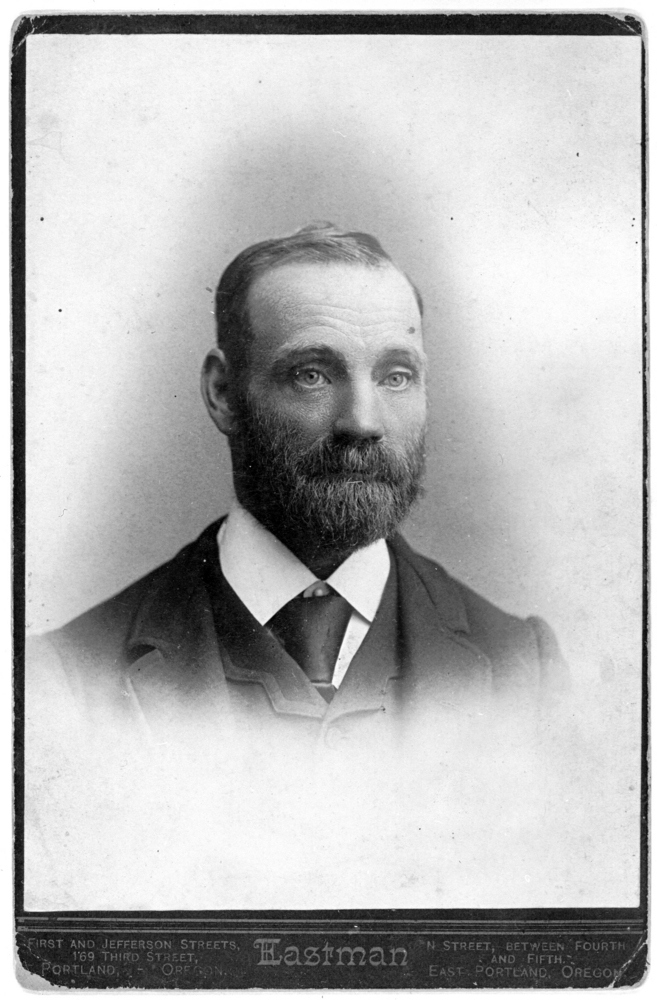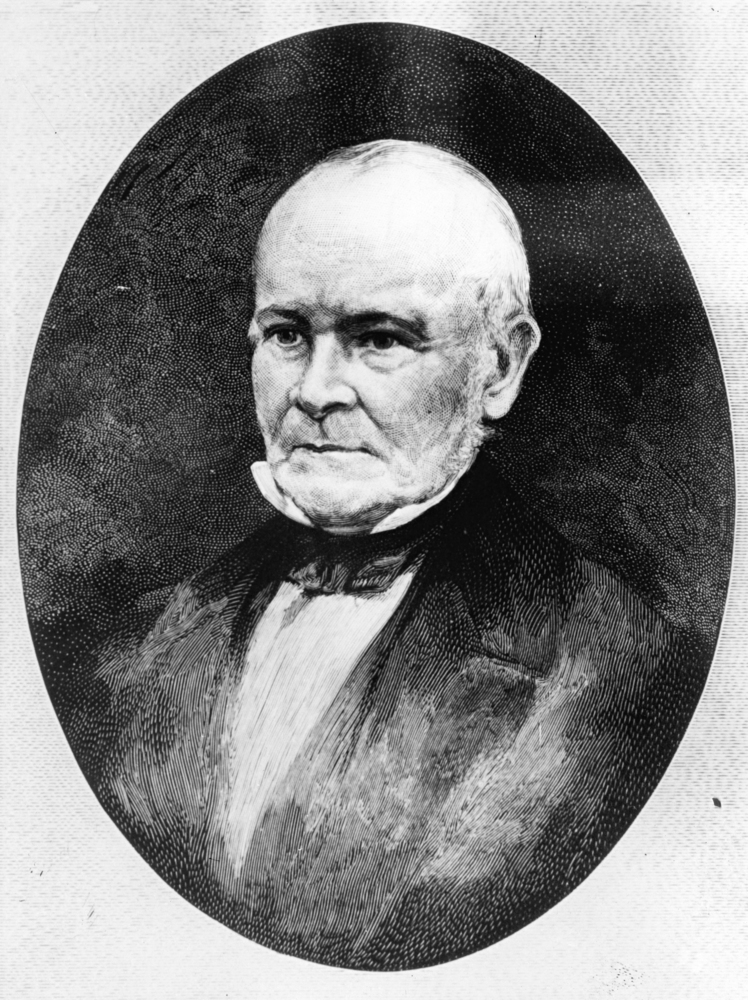David Douglas is one of the best-known botanists in Oregon history, primarily because of the tree that bears the common name Douglas-fir (Pseudotsuga menziesii, once Pinus douglasii), the Oregon state tree. From humble beginnings and through fortunate circumstance, he became a highly regarded collector of Pacific Northwest plants and animals, which he sent to the Royal Botanic Gardens, Kew, in London, England, during the years before his death in 1834. His name is attached to more than eighty species of plants and animals.
Born in the village of Scone on June 25, 1799, just north of Perth, Scotland, Douglas was the son of stonemason John Douglas and Jean Drummond. He attended local schools, and by the time he was eleven, he was working as a gardener for local landowners, the Earl of Mansfield and Sir Robert Preston. While working at the Botanical Garden in Glasgow, he became acquainted with the garden’s curator, Stewart Murray, and British botanist Sir William Jackson Hooker. Douglas attended Hooker’s lectures and had access to private libraries. Hooker later described him as a person of "great activity, singular abstemiousness, and energetic zeal."
In 1823, on Hooker's recommendation, the Royal Horticultural Society chose Douglas as a botanical collector. The Society intended to send Douglas to China, but arrangements fell through so he ended up going to eastern North America. In 1824, he found passage on a Hudson's Bay Company vessel, the William and Ann, and arrived in Fort Vancouver on the Columbia River on April 7, 1825. Among his duties were keeping a journal of his activities and collecting seeds and plant specimens that might be useful as horticultural plants in England. Douglas visited North America three times, twice to the Pacific Northwest and California to look for plants, particularly fruit trees, forest trees, and oaks.
On his 1826 trip to present-day Oregon, Douglas took careful notes on the local vegetation as he traveled up the Willamette Valley. On September 30, he recorded one of the earliest descriptions of the Indian use of fire: “Most parts of the country burned; only on little patches in the valleys and on the flats near low hills that verdure is to be seen. Some of the natives tell me it is done for the purpose of urging the deer to frequent certain parts, to feed, which they leave unburned, and of course they are easily killed. Others say it is done in order that they might the better find wild honey and grasshoppers, which both serve as articles of winter food."
In October, he traveled farther south to near present-day Roseburg on the Umpqua River, primarily to collect the cones of the sugar pine (Pinus lambertiana). On October 26, he described an encounter with a local man who led him to the "long-wished-for pines." While shooting the cones out of a tall tree, which Douglas described as hanging at the tips of branches “like small sugar-loaves in a grocer's shop,” he attracted several Natives who seemed "anything but friendly." After a tense standoff, one man indicated that they wanted tobacco, and Douglas responded that he would oblige them if they brought him more cones. The men went in one direction, and Douglas with three cones and a twig went in another.
Douglas was interested in all aspects of the landscape, including animals. Those named in his honor range from the pigmy short-horned lizard (Phrynosoma douglasii) to the Douglas squirrel (Tamiasciurus douglasii). He shipped a number of specimens to Great Britain for examination by leading scientists. Some species, such as the mountain beaver (Aplodontia rufa), were new to science. Douglas also reported seeing—and shooting—California condors (Gymnogyps californianus) on the Columbia River.
In 1827, Douglas traveled through the Northern Rockies and then to York Factory on Hudson Bay before returning to London. He worked on his collections until October 1829, when he again traveled to Fort Vancouver. He spent time on the California coast in 1831-1832, collecting plants and animals and making geographic observations. In 1832, on his return to the Columbia River, he made his first visit to the Hawaiian Islands. He explored the Fraser River district in 1833 and left the Northwest on October 18, 1833, for a return trip to the Hawaiian Islands and a planned return to London. Douglas had been intrigued by Hawaii and wanted to continue collecting. Unable to get prompt transportation to England, he spent extra time in the islands. It was there, on July 12, 1834, that he met his end, trampled by a bullock in a deep pit designed to capture cattle.
Douglas introduced more than two hundred Pacific Northwest plants to Great Britain, many of them important in British gardens today, including Oregon’s red-flowering current (Ribes sanguineum). At Scone Castle, near Douglas's birthplace, stands a magnificent Douglas-fir, grown from seed that he sent back from western North America in 1826. His introduction of Sitka spruce (Picea sitchensis) to Britain forms the basis of that country’s modern conifer forestry.
Douglas was an indefatigable botanist and natural historian whose name is honored in more than eighty species of plants and animals. David Douglas High School in Portland is named for him.
-
![Illustration by A.R. Stringer, 1915]()
David Douglas.
Illustration by A.R. Stringer, 1915 Courtesy Oreg. Hist. Soc. Research Lib, CN019683
-
![Drawing of Douglas Fir branch.]()
Douglas fir, drawing of.
Drawing of Douglas Fir branch. Courtesy USDA-NRCS PLANTS Database
Related Entries
-
![Abraham Lincoln Savage (1864-1950)]()
Abraham Lincoln Savage (1864-1950)
At the time of his death in July 7, 1950, Abraham Lincoln Savage was co…
-
![Albert Sweetser (1861-1940)]()
Albert Sweetser (1861-1940)
Albert Raddin Sweetser established the University of Oregon Herbarium a…
-
![Carrie Phinney Sweetser (1863-1952)]()
Carrie Phinney Sweetser (1863-1952)
Carrie Sweetser was a watercolorist, a life-long diarist, and her botan…
-
![Douglas-fir]()
Douglas-fir
Douglas-fir (Pseudotsuga menziesii), perhaps the most common tree in Or…
-
![Elmer Ivan Applegate (1867-1949)]()
Elmer Ivan Applegate (1867-1949)
Elmer Ivan Applegate was an important early Oregon botanist best known …
-
Georgia Mason (1910-2007)
Georgia Mason was unique among twentieth-century Oregon botanists in th…
-
Helen Gilkey (1886-1972)
Helen Margaret Gilkey was a nationally recognized mycologist, a talente…
-
![John Jeffrey (1828-?)]()
John Jeffrey (1828-?)
In 1850, a group of influential Scottish and British botanists and hort…
-
Lilla Leach (1886-1980)
Lilla Irvin Leach was an independent field botanist who, with her husba…
-
Louis F. Henderson (1853-1942)
Louis Forniquet Henderson was one of Oregon's most important early bota…
-
![Morton Peck (1871-1959)]()
Morton Peck (1871-1959)
Born in a log cabin in Iowa on March 12, 1871, Morton Peck was an inspi…
-
![Oregon white oak]()
Oregon white oak
Oregon white oak, Quercus garryana, grows along the Pacific Coast from …
-
![Reuben Nevius (1827-1913)]()
Reuben Nevius (1827-1913)
Reuben Denton Nevius—clergyman, missionary, educator, and botanist—foun…
-
![Sugar pine]()
Sugar pine
Sugar pine (Pinus lambertiana) is one of the great conifers of the west…
-
![Thomas Howell (1842-1912)]()
Thomas Howell (1842-1912)
The life of Oregon's Thomas Jefferson Howell is surely unique among bot…
-
![Thomas Nuttall (1786-1859)]()
Thomas Nuttall (1786-1859)
Thomas Nuttall was one of the most enthusiastic and energetic of the ea…
Related Historical Records
Map This on the Oregon History WayFinder
The Oregon History Wayfinder is an interactive map that identifies significant places, people, and events in Oregon history.
Further Reading
Finding David Douglas (film). Oregon Cultural Heritage Commission.
Mitchell, Ann Lindsay, and Syd House. David Douglas:Explorer and Botanist. London: Asurum Press,1 999.
Nisbet, Jack. The Collector: David Douglas and the Natural History of the Pacific Northwest. Seattle: Sasquatch Books, 2009.
Nisbet, Jack. David Douglas: A Naturalist at Work. An Illustrated Exploration Across Two Centuries in the Pacific Northwest. Seattle: Sasquatch Books, 2012.
Douglas, David. Journal kept by David Douglas during his travels in North America, 1823-1827. Published under the direction of the Royal Horticultural Society. New York: Antiquarian Press, 1959. (A slightly different version, published by William Wesley & Son London, 1914, is available at http://www.archive.org/details/journalkeptbydav00dougiala)
Douglas, David. "Sketch of a Journey to the North-Western Parts of the Continent of North America during the Years 1824-25-26- 27." [Reprinted from The Companion to the Botanical Magazine, V2 London 1836]. Oregon Historical Quarterly 5-6 (1904-1905): Part I, 231-271; Part II, 325-369; Part III, 76-97; Part IV, 206-227; Part V, 288-309; Part VI, 416-449.
Hooker William J. "A Brief Memoir of the Life of Mr. David Douglas, with Extracts from his Letters." Oregon Historical Quarterly 5 (1905): 223-229.
Hooker, William J. Curtis’s Botanical Magazine 61 [ser. 2, vol. 8] (1834): t. 3335.


